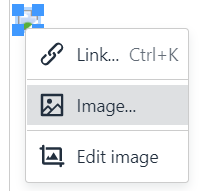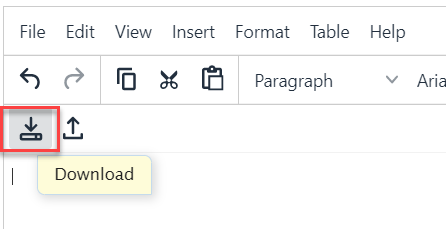Every measure of inconsistency is for one participant and one cluster of judgments. Inconsistency cannot be summed across multiple participants or clusters.
The inconsistency ratio is useful for finding instances where the participant may not have been focused or patient enough to make consistent judgments. Or perhaps the participant clicked on one side (right or left) when they intended to click on the other side.
Some level of inconsistency is perfectly acceptable. The AHP theory says you should look at inconsistencies over 10% (0.1) but, in practice, you can accept more because inconsistency is a natural human attribute.
An inconsistency measure of 100% (1) or more indicates random judgments.
To deal with high inconsistencies, you can:
1) ask the participant to review their judgments and make revisions as necessary;
2) remove the participant from the model, or take away their roles for the inconsistent cluster;
3) create a participant group that excludes participants with high inconsistency and do your analysis on that group.
You can also look at the consensus report, which calculates the standard deviation across participants.
Information Documents formatting can be inconsistent for a few reasons, such as when the information was copied from an external source document and pasted to the rich text editor.
We suggest clearing or resetting the formatting using the icon below:

After clearing the formatting, you can then reformat your information document on our Rich Text Editor.
Images can be added to the information documents. If the image does not show up, you have what's called a broken image.
A broken image looks like this:
- Chrome and Microsoft Edge:

- Firefox:

- Internet Explorer:

Image can be added to information documents by:
- Uploading an image from your local machine
- Adding an image from an absolute image path (public URL)
- Copying-Pasting an image
Broken image may occur when:
- The Image no longer exists given the absolute image path -- images from the internet (public URL) may be broken when the image was deleted or moved.
- Fix: Update the Source URL
- Open the editor
- Right-click the broken image icon and then select "Image"

- On the General tab, update the Source URL
- Fix: Update the Source URL
- Copying an image from one information document and then pasting it to another information document. Copying an image from one information document to another will cause an incorrect image relative path. The image may temporarily show up but once the site is rebuilt or you upload the model to another site, you will see the broken image icon.
- Possible Fixes:
- Upload the image file;
- Copy the image from the original source, not from an information document, and then paste it to the editor;
- If you want to copy an image from one information document to another, you can also download the information document as a .MHT file and then upload it. This is also helpful if you want to download the entire information document, not just the image.

- Possible Fixes:
Your judgments are automatically recorded when you move to another step, using the "Next," "Previous," or "Next Unassessed" button.
You can also click the step number you are currently at to save your judgments and to stay on that page.
- If you are a Workgroup Manager/Owner, you have permission to create new models and manage all existing models and participants in your workgroup.
- If you cannot see these options, your workgroup permission might be assigned incorrectly; please contact us at: support@expertchoice.com or thru our live chat.
- If you are a Project Organizer, you can create new models and manage only the models you created or you have a Project Manager's permission.
- If you think your permission is not right, please contact your Workgroup Manager.
Please note that your workgroup license also determines if you can create more models.
Comparion computes the eigenvector of the judgments (not the priorities) across the selected participants to calculate combined priorities. There is no native spreadsheet function to do this -- this is what Comparion does.
For the combined priorities, first the geometric average is computed by taking the nth root of the product of the n judgments of the n participant's judgment for each pair. Then Comparion computes the eigenvector of these geometric averages. These derived priorities are shown to more accurately reflect the overall priorities.
Here are common troubleshooting techniques that often help.
- Try a hard refresh.
Browsers store cached versions of web pages to speed up your experience. However, sometimes this causes you to view an older version of a site or application. If the site looks weird or is glitching, doing a hard refresh often can fix the problem.- Windows: Control + F5
- Apple/Mac: Command + R or Apple + R
- Linux: F5
- Log out and log back in.
The software equivalent of turning it off and on, this is probably the most common troubleshooting technique there is. It's common because it works a lot of the time. Not successful? Try totally logging out and totally closing your browser. If you happen to leave your browser open for long periods of time, it can become very slow and cause performance issues with many sites and applications. - Clear your cache and cookies.
Your browser stores a lot of information about your web history in cookies and cache. Over time, this can slow down your browser and, with certain sites or applications, can cause conflicts with newer versions. Sometimes it might be helpful to clear your cache and cookies to improve browser and application performance.- Chrome: https://support.google.com/accounts/answer/32050
- Firefox Cache: https://support.mozilla.org/en-US/kb/how-clear-firefox-cache
- Firefox Cookies: https://support.mozilla.org/en-US/kb/delete-cookies-remove-info-websites-stored
- Internet Explorer: http://windows.microsoft.com/en-us/internet-explorer/manage-delete-browsing-history-internet-explorer
- Safari Cookies: https://support.apple.com/kb/PH19215
- Safari Cache: https://support.apple.com/kb/PH19215
- Try a different browser.
Some issues may be browser-specific or caused by an extension or plugin. Trying a different browser can help you narrow down what is causing a problem.
If you are still having trouble, please reach out to support. We're here to help.





